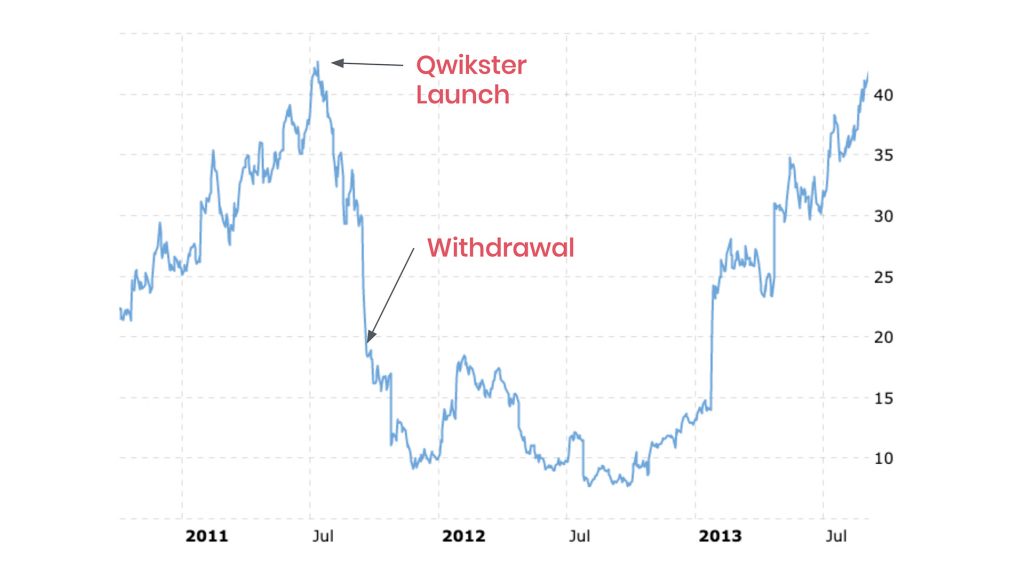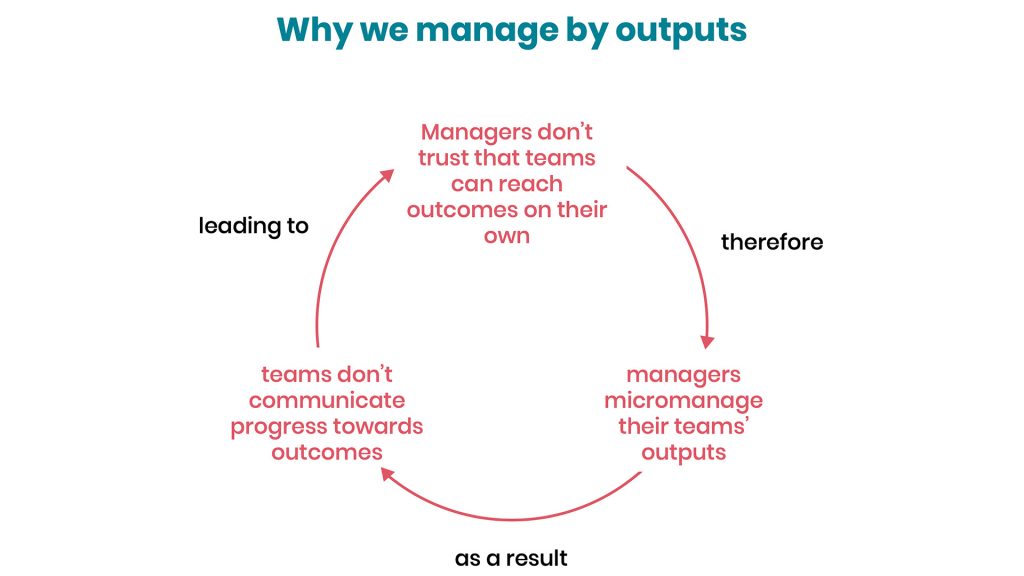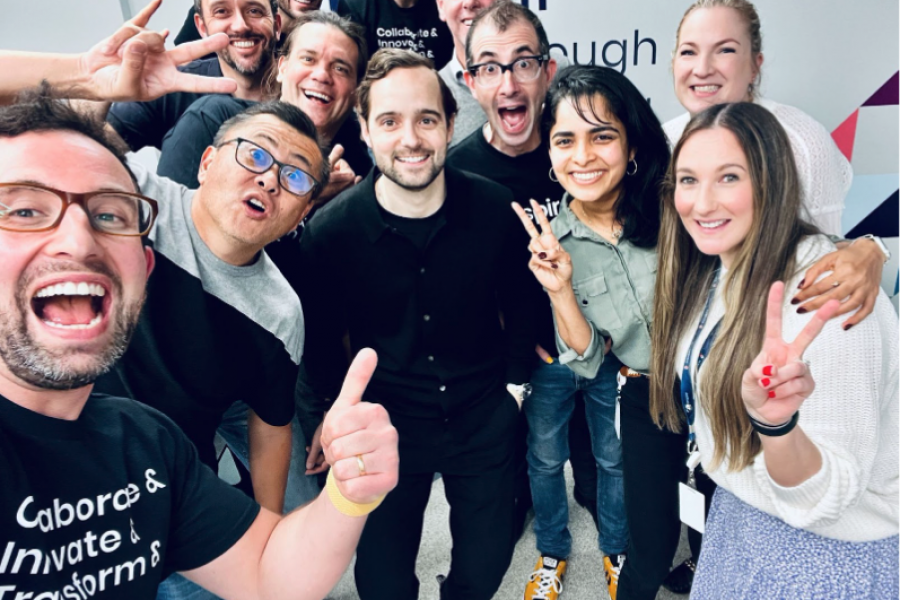Back in 1997, Reed Hastings co-founded a little known company called Netflix. Back then, the Netflix experience was a lot different to what it is today.
As a customer, you selected the movies you wanted to watch from its website, which would then be delivered as a DVD by mail in a red envelope. After watching, you would send it back to Netflix before receiving the next title.
Relatively speaking, this was a revolutionary product at the time – it offered an outstanding selection of titles with no late fees, providing convenience and cost-savings over traditional movie rental stores.
Customers loved it too. In the nine years between its IPO in 2002 and 2011, Netflix shares went from $1.21 to $42, which represented a 48% compounded annual rate of return. In other words, a $10,000 investment at IPO would have eventually been worth $42 million.
During this growth stage, Netflix started rolling out the on-demand streaming service it has become synonymous with since. Although there were only a limited selection of titles to begin with, Netflix continued to add more content to the platform and started gaining traction among early adopters.
Then came a decision which led to one of the worst new products in modern history.
An expensive example of digital product failure
Reed and his team decided to split the business in two. Netflix represented the on-demand streaming service, while its DVD subscription product became a new subsidiary – Qwikster. The value proposition looked like this:
- Two websites
- Different login details
- Separate billing details
- Separate favourite lists
- 60% more expensive
One month after Qwikster launched, 800,000 customers had unsubscribed from Netflix. Within three months, Netflix shares lost 75% of their value and dipped below $10 each.
To arrest the slump, Reed swiftly canned Qwikster and reverted back to the previous single product offering, but it was too late. Customers no longer trusted Netflix and the damage to the brand was done. It took another two years for Netflix shares to recover to pre-Qwikster prices.
But Netflix is not alone when it comes to new product failures. According to studies from Harvard, MIT, Michigan State and others, around 75% of all products fail. This is despite the fact the world’s biggest companies continue to spend vast sums of money on R&D ($858 billion in 2018 to be exact).
This is a stark reminder that innovation doesn’t come easy. When companies launch a new product, there’s a strong chance it will fail. But what are the main reasons why?
Lack of customer focus
In most organisations, it’s extremely easy to fall into the trap of focusing on internal business problems rather than creating customer value. It usually happens like this…
Some new piece of technology or market opportunity captures the attention. Let’s use a mobile app for example. Stakeholders from all over the business will have their own objectives, ideas and drivers for the app.
Before you know it, the app becomes too complex and bloated with no clear roadmap of how it’s going to add value to users.
A key component of every product manager’s role is to understand customer context. What problems are you solving for customers? How painful are these problems? Under what circumstances do customers become aware of these problems?
Research is required to establish a deep understanding of customer context. These insights can then be communicated to stakeholders to leverage the voice of the customer for better decision making.
Thankfully, lots of tools and processes have been developed that allow you to more effectively understand, capture and communicate customer context:
- User interviews – User interviews are great at gaining a deep understanding of your customers because they help you uncover the drivers that lead to certain behaviours. Unlike surveys, a small number of interviews can provide enough data to inform and validate your understanding.
- Value prop canvas – In addition to uncovering the functional jobs of product development, a value prop canvas can also explore the emotional pains and gains customers experience throughout their journeys. This creates a more holistic understanding of what resonates with customers the most.
- Questionnaires & benchmarks – Customer expectations are driven by their experiences of other products on the market. UX questionnaires can be used to measure and benchmark customer experience across a number of areas to gauge how well your product is meeting expectations.

Choosing the wrong technology
Implementing and applying the wrong technologies to a product can impact the velocity at which customers receive value, and even constrain the operations of the business. This is often caused by a lack of strategy.
So, it makes sense to get your entire team on board with a clear vision of what success looks like in the future. Your vision should be actionable and describe who the product is for, their current state of mind and how it will help them progress to a desirable future state.
Another reason for choosing the wrong technology is because of familiarity with existing platforms or frameworks and failing to explore alternatives. In this scenario, short-term gains can often turn into long-term pains because of a tech debt.
There can also be a bias towards selecting technology based on cost without an assessment of its impact on the end-to-end customer experience.
All of this can be avoided by:
- Developing a clear vision and defining aspirations.
- Introducing a technology discovery phase.
- Engaging the right SMEs.
Thinking the product is ‘done’ after launch
In most teams, there is an obsession with shipping product. There’s nothing wrong with this, as shipping a good quality product on time and on budget is well worth celebrating.
But teams should be equally obsessed with the product’s impact too. That’s the difference between measuring outputs vs. outcomes – what gets shipped vs. what the impact is. For example, how well did feature X solve the customer’s problem? And are they more likely to recommend the product as a result of this change?
Measuring by output leads to feature factory behaviour. The team feels like they’re just making one widget after another without thinking about whether they actually make a difference to the customer.
Teams who strive for outcomes care deeply about the impact on customers. They are empowered to explore a range of opportunities and solutions that will make the customer successful.
But if managing by outcome drives customer and business value, why do so many product teams focus on output? It often comes down to how much trust leadership has in the team.
So remember to:
- Empower product engineering teams
- Define clear outcome-based objectives and measurable key results
One excellent example to follow is the OKR framework that Google employs. It aligns key results, which are quantitative and measurable, with objectives, and scales nicely at every level of the organisation.
How to avoid digital product failure with Transpire
Back in the early days of Transpire, digital products and experiences were in their infancy. This meant learning as we went along, not always knowing whether the decisions we made we the right or wrong ones.
Fast forward to today and several of our customers come to us in a similar position – making assumptions about what their users want, not having a clear product vision or roadmap, wondering which development framework would be best use.
Both then and now, we put our faith in people to provide product confidence, digital capability and project collaboration. Not just with the talent Transpire hires across design, development, project management and delivery, but also when listening to the people who actually end up using the products we create.
To avoid the pains of digital product development, and to achieve several gains along the way, get in touch with Transpire today.











